Discovering black ants in your home is never ideal, especially when they seem to appear in the same areas no matter how often you clean. These tiny intruders are more than just an inconvenience. Depending on the species, they can signal moisture issues, structural vulnerabilities, or simply easy access to food. While some ants enter homes in search of crumbs or water, others may already be nesting inside your walls, quietly expanding their colonies over time.
Understanding what species you’re dealing with is the first step to solving the problem. Different ants behave differently, and the right solution depends on accurate identification. Below, we’ll walk you through how to distinguish between types of black ants, what draws them indoors, and why professional pest control often becomes necessary for long-term relief.
Identify Which Type of Black Ants Are in Your House
When trying to identify black ants, size is one of the first and most helpful clues. Most black ant species that enter homes fall into two categories: larger ants that may cause structural damage or smaller ants that form expansive, hard-to-control colonies.
Let’s explore each group and the specific ant species you’re most likely to encounter.
Big Black Ants
Big black ants typically range from ¼ to ½ inch in length. Their size alone often startles homeowners, but these ants can also be a sign of larger issues like moisture damage or deteriorating wood structures. Here’s a breakdown of the most common large black ants you might find indoors:
Carpenter Ants
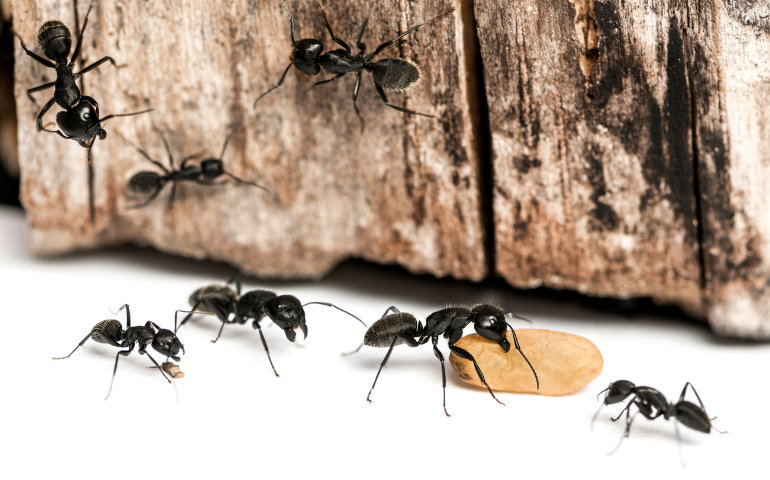
Carpenter ants are among the most common and concerning big ant species found inside homes. Although they don’t consume wood like termites, they excavate it to create smooth tunnels for their nests. Over time, this behavior can compromise the structural integrity of beams, wall supports, and window frames.
What attracts carpenter ants:
- Wet or rotting wood, often near leaking roofs, windows, or plumbing
- Firewood or tree limbs in contact with your home’s exterior
- Poor ventilation in crawl spaces or attics
- Existing insect damage or water intrusion inside walls
Field Ants
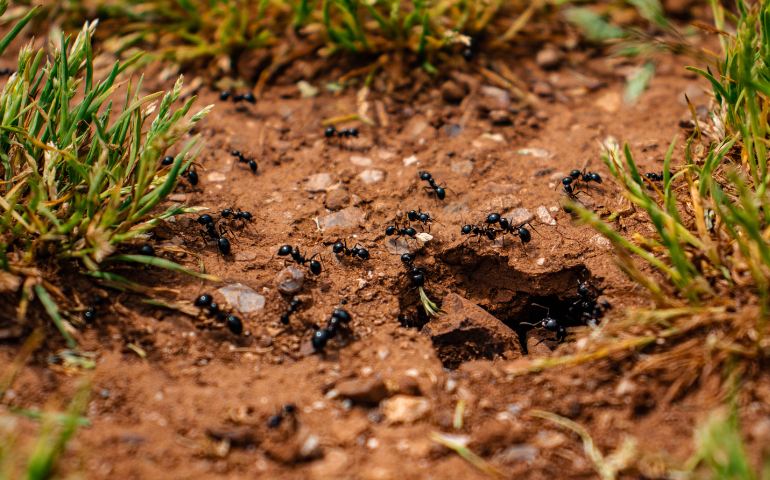
Often mistaken for carpenter ants due to their size and color, field ants primarily nest outdoors. However, these big ants can become indoor nuisances when they forage for food or shelter during extreme heat or rain. While they don’t pose the same threat to wood structures, they may still establish satellite nests near the home if access is easy.
What attracts field ants:
- Sugary or protein-based food scraps near doors or baseboards
- Pet food left outdoors or in garages
- Mulch beds or leaf litter pressed against exterior walls
- Cracks in masonry or siding allowing entry
Black Harvester Ants
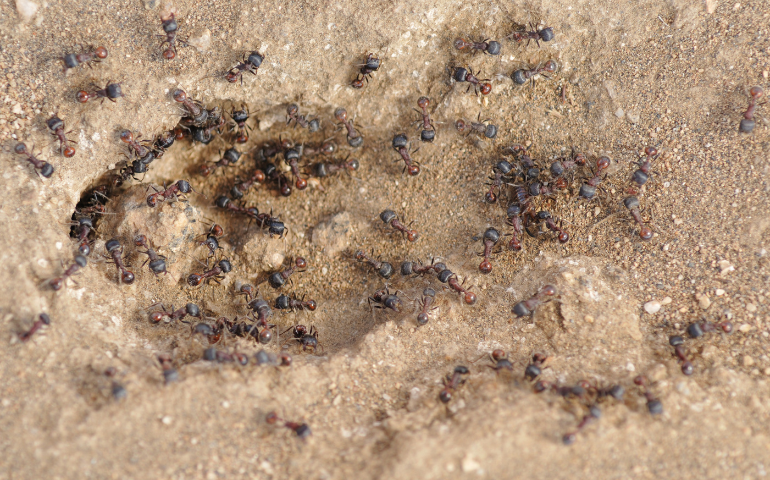
Black harvester ants are more commonly encountered outdoors, particularly in dry, open areas. However, if their nests are located near the home, they may begin appearing in garages, basements, or ground-level rooms. These ants are primarily foragers and are known for collecting seeds and other dry organic material.
What attracts black harvester ants:
- Bird feeders or spilled seed near the perimeter of the home
- Dry soil near foundation walls
- Gaps under garage doors or around utility openings
- Crumbs or dry food in storage areas or attics
Small Black Ants
Small black ants, often measuring 1/16 to 1/8 inch, are frequent invaders in residential kitchens, bathrooms, and utility spaces. Though less physically damaging than carpenter ants, their colonies can be enormous and difficult to locate or remove. These species rely heavily on pheromone trails to guide other ants to food and water sources.
Odorous House Ants
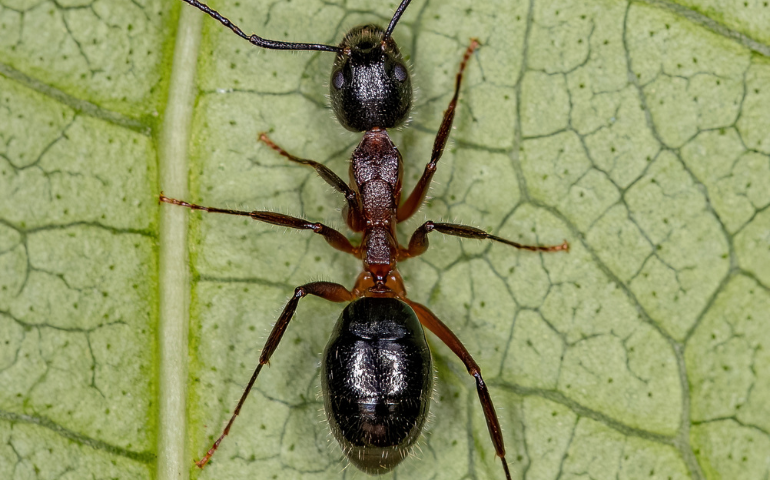
These tiny black ants are easily identified by the pungent, rotten coconut-like smell they emit when crushed. They are incredibly persistent and will reestablish their presence even after surface-level treatments. Their colonies can split quickly under stress, making control more complicated without professional intervention.
What attracts odorous house ants:
- Moisture from dripping pipes or wet towels in bathrooms and laundry rooms
- Greasy food residues, especially behind kitchen appliances
- Leaky dishwashers or sink cabinets with pooled water
- Fruit left out on counters or food spills in trash bins
Pavement Ants
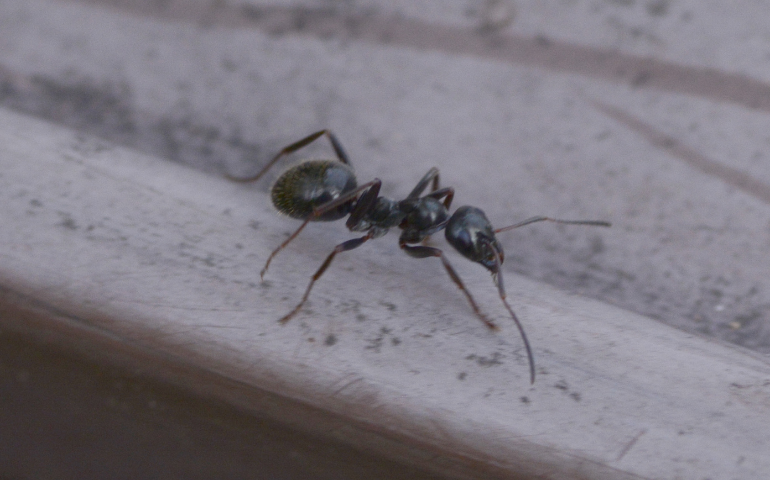
Named for their habit of nesting beneath concrete slabs and driveways, pavement ants may find their way indoors through foundation cracks or expansion joints. Once inside, they prefer to nest in insulated voids or between subflooring, making them difficult to detect.
What attracts pavement ants:
- Poorly sealed foundation edges or utility penetrations
- Pet food bowls with leftover kibble
- Sticky or sugary spills not promptly cleaned
- High humidity levels in basements or ground-level kitchens
Sugar Ants (General Term)
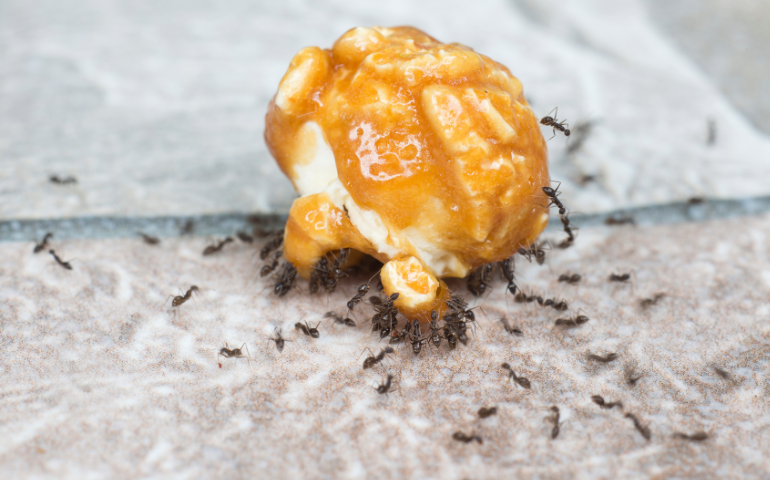
“Sugar ants” is not a scientific name, but rather a general label used for small black ants attracted to sugary substances. These little black ants are highly opportunistic and can quickly establish trails to any consistent food or water source.
What attracts sugar ants:
- Unsealed containers of honey, syrup, or cereal
- Spilled soft drinks or fruit juices
- Food debris under dining tables or high chairs
- Trash cans lacking tight-fitting lids
How to Get Rid of Black Ants in Your House
If you’ve been relying on over-the-counter sprays or homemade remedies, you’ve probably noticed that ants keep returning. That’s because most DIY solutions target the visible ants but fail to eliminate the colony, especially the queen, which is hidden elsewhere.
DIY methods may include:
- Cleaning surfaces thoroughly with vinegar or citrus-based cleaners
- Sealing cracks around baseboards, windows, and doors
- Storing food in airtight containers
- Setting out bait traps along active trails
While these steps can reduce surface activity, they rarely eliminate the underlying issue. In fact, some DIY baits may cause the colony to split or relocate, making the infestation more difficult to treat.
Why DIY treatments fall short:
- Colonies are often located deep within walls or under concrete
- Ants may avoid or become resistant to store-bought baits
- Sprays kill workers but leave queens and brood untouched
- Moisture problems or food access remain unresolved
Professional Ant Control with Alta Pest Control
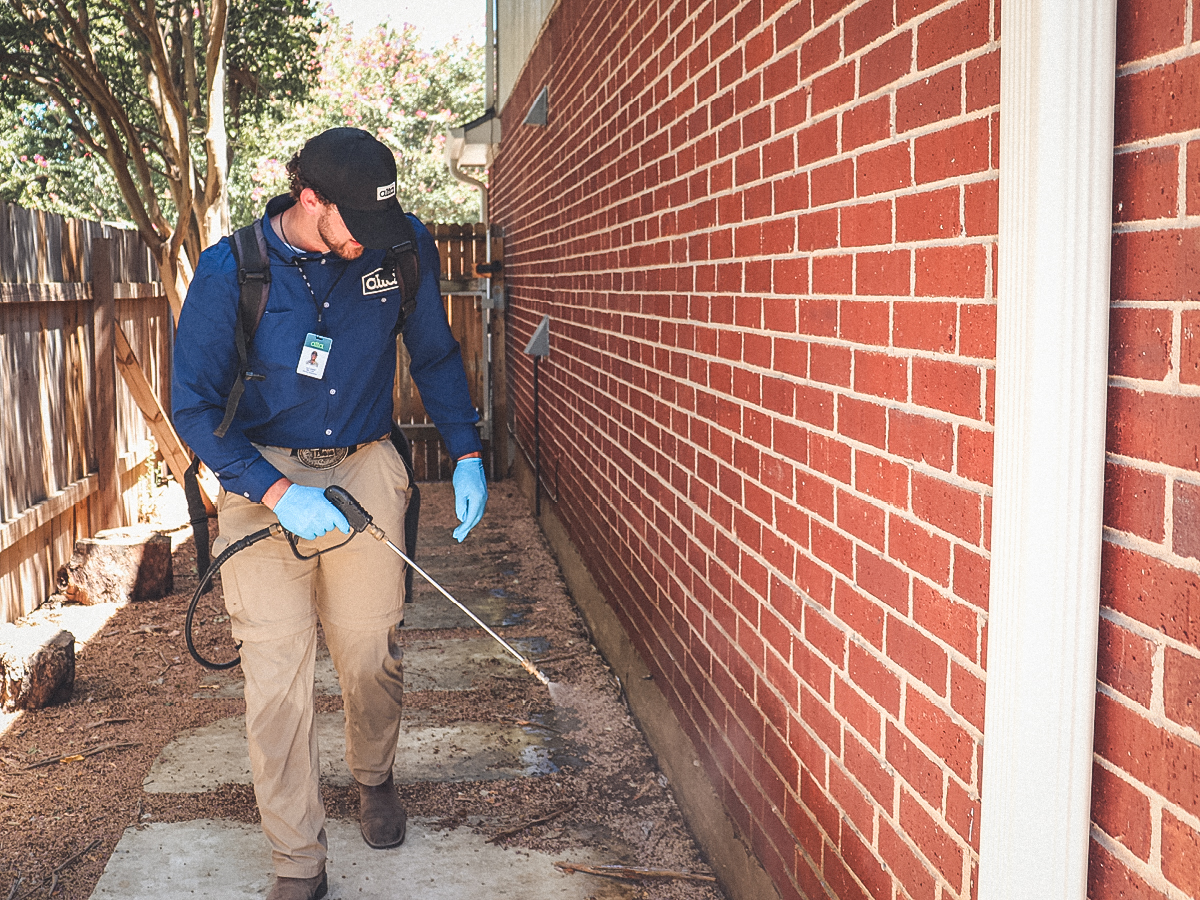
At Alta Pest Control, we take a comprehensive approach to ant control. We don’t just treat the symptoms, we locate the source, target the nest, and use professional-grade solutions designed for long-term control. Whether you’re dealing with large carpenter ants or a persistent trail of tiny sugar ants, our team can eliminate the problem and keep your home protected.
Why homeowners trust Alta Pest Control:
- 48-hour response guarantee
- Detailed inspection to identify entry points and nesting sites
- Quarterly treatments with free re-treatments between visits
- Friendly, knowledgeable technicians who explain every step
- Family- and pet-friendly products applied with precision and care
- 100% satisfaction guarantee, if ants return, so do we
We take pride in delivering pest control that’s clear, effective, and built around your needs. There’s no guesswork or hidden surprises, just reliable service and results you can count on.
Contact Alta Pest Control today to schedule your ant service. Let’s get rid of those black ants, and make sure they stay gone. See if we service your area.
Share article:
